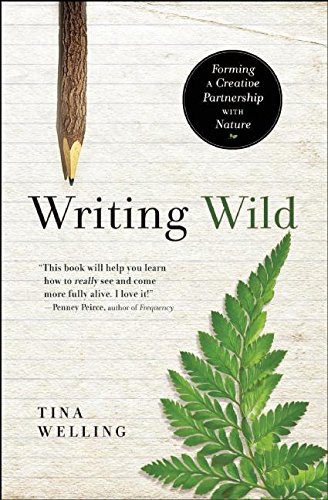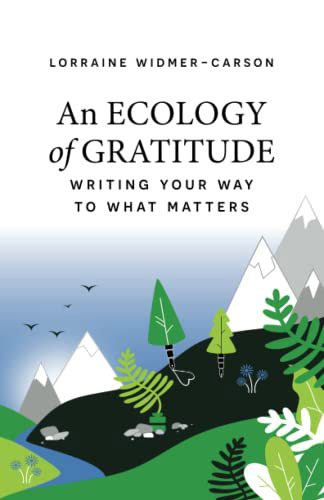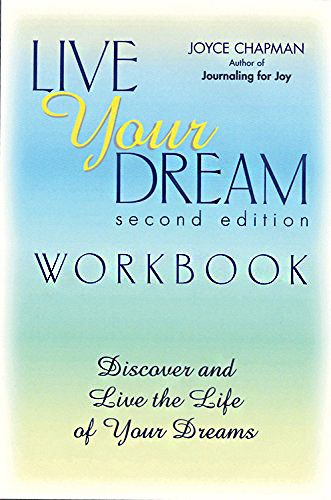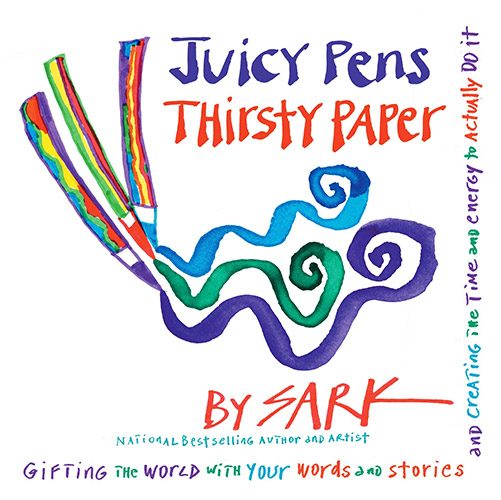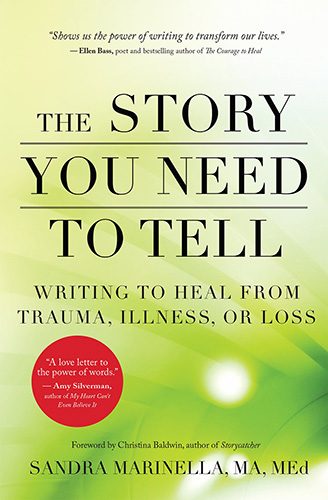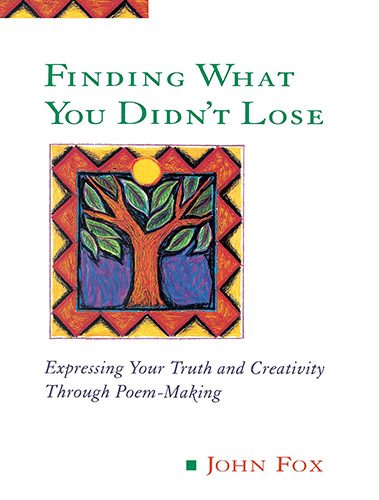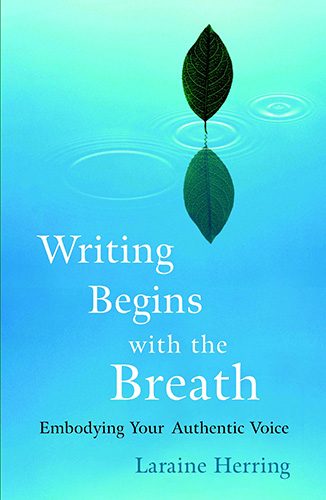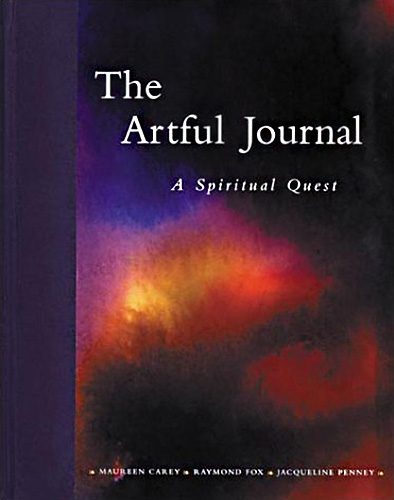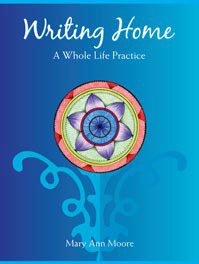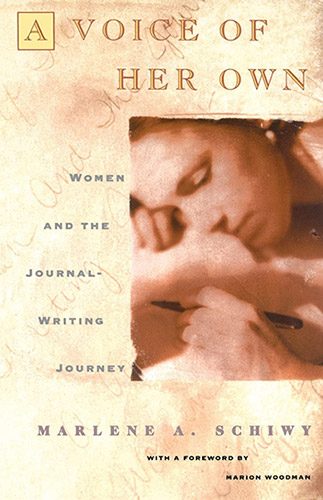Originally Posted on The Coaching Tools Company as Top 10 Book Recommendations: Get Creative with Your Journaling! | by Lynda Monk MSW, RSW, CPCC
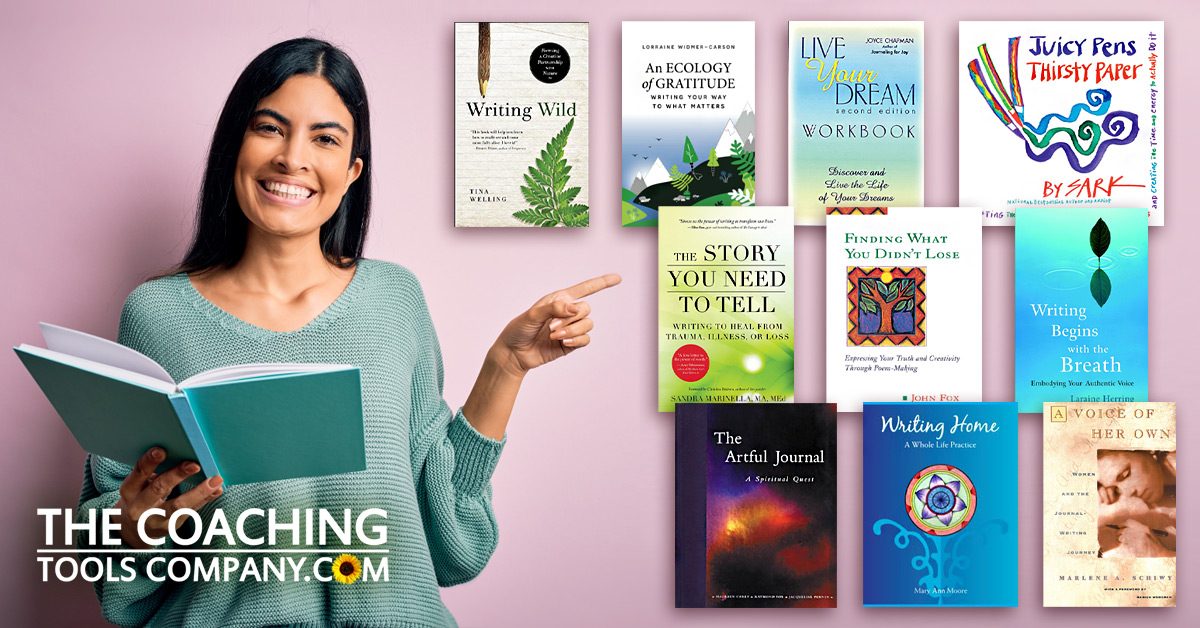
Introduction
As a coach, author and entrepreneur, one of my favourite go-to practices for my own self-care, creativity and personal growth is journaling. I have journaled since I was a young girl, and I could never have known all those years ago how central journaling would become to my life and work.
As the director of the International Association for Journal Writing, I regularly offer journal coaching programs, online courses and virtual retreats. I also frequently facilitate writing circles, lead interviews with experts in the field of expressive writing, and create new journaling courses, tools and other offerings for members in our global community of journal writers.
I strongly believe that journal writing is a valuable tool for coaches and clients alike for many reasons:
- Its central purpose is to gain self-understanding through expressive writing, reflection, inquiry and story.
- It works with themes, metaphors, the senses, memory and language.
- It’s a form of creative self-expression with many proven benefits, including health, healing and wellness, as well as personal growth opportunities.
- It can support who we are and what we do as coaches in helping others to deepen their learning and forward their inspired action in alignment with their core values and goals.
- Our clients can go to the page to know, grow and care for themselves.
This article offers 10 top book suggestions that can help you get creative with your own journal writing, as well as inspire you with new ideas for how you might integrate journaling into your transformational work with your coaching clients. (Picking just 10 was challenging as I love a lot of books about journaling!) Some of these are older books, but they’re ones I still turn to on a regular basis.
As you read this article…
I encourage you to let your imagination roam freely and think about how you can use some of these books and ideas within your coaching practice and with your clients. Perhaps you’ll get some fun ideas for exercises in your workshops or group coaching programs, spark some creative homework/playwork activities for your clients or get inspired to deepen your own journaling practice as a coach.
IMPORTANT NOTE: Whilst Amazon is a convenient way to purchase books, many local community bookstores are struggling to stay alive. If you can, why not order your book from your local bookstore, both boosting your local economy and supporting a fellow small business owner? Or consider using Bookshop.org (which gives money back to small bookstores). We have recently become an affiliate for them, and love the option to offer Wishlists and an alternative to Amazon!
Here are My Top 10 Books to Get Creative with your Journaling
1. Writing Wild: Forming a Creative Partnership With Nature
Author: Tina Welling
Why I love this book: This is one of my favourite books on nature journaling. It looks at how we fully inhabit place, how we connect with and honour the earth, while also being deeply rooted in our awareness of self—living in our own skin, our own nature, supported by the greater nature around us.
The author says, “Creating and healing are soul work, soil work.” I love how she offers many nature metaphors and analogies, connecting the outer world with inner-world truths and explorations.
Ideas to use this book in your coaching:
I have always enjoyed both nature-based journaling and coaching in the great outdoors. I’ve facilitated group coaching sessions and workshops, or parts of them, in parks, on trails in the forest and at the beach.
In this book, the author provides creative “Try this” exercises in every chapter. For example, she suggests this:
- Take your notebook outside and choose a fallen leaf, a frosted twig, a teaspoonful of dirt, and experience this small piece of nature and yourself interacting with it.
- Do this by first naming, then describing, then letting memories, ideas, wishes, and concerns stir within you.
- Whatever occurs to you in the moment, you’re to trust, for it is yours and yours alone, inspired within you by your openness to nature in this time and in this place, with each step in accordance with mystery and chance.
You could give nature-inspired journaling activities like this to your clients and explore their insights in your coaching session.
2. An Ecology of Gratitude: Writing Your Way to What Matters
Author: Lorraine Widmer-Carson
Why I love this book: There are many books that reference gratitude journaling as a meaningful practice for well-being and resiliency. This new book is an excellent deep dive into the benefits of gratitude journaling, and it also offers many writing exercises and prompts to support you in developing such a practice. It offers 30 days of reflections and prompts, including topics like Day 1: Enter with a positive state of mind and Day 19: Gratitude, life purpose and well-being.
Ideas to use this book in your coaching:
Gratitude is a valuable core value and habit to bring into our coaching work. This book not only looks at the benefits of gratitude for individuals but also shares ways to engage in gratitude within communities and workplaces.
If you’re a coach working with groups, teams or organizations, you could use exercises such as:
- Day 5: Testing the gratitude waters in community
- Day 25: Gratitude and systems change
You can ask the group, “What is going well?” to help draw out their strengths and points of pride. You could use this question as a journaling prompt and then invite them to share in small groups what they’ve written or what they noticed from their writing.
Important Note: People should always have a choice about whether they share their journaling or not.
3. The Live Your Dream Workbook: Discover and Live the Life of Your Dreams (second edition)
Author: Joyce Chapman
I love all of the creative books and workbooks that Joyce Chapman writes. She has written Journaling for Joy and a companion workbook, as well as Live Your Dream and the workbook featured here. She also has a book called Raising a Dreamer: How to Inspire and Guide Young Dreamers to Live a Dream-Centered Life.
Why I love this book: This workbook is really a guided journal filled with prompts that are organized within topics that are central to living the life of one’s dreams, such as defining the dream, clearing away obstructions to be clear about your dream, having a winning attitude and more. Simply reading the table of contents in this workbook is inspiring!
Ideas to use this book in your coaching:
If you’re working with clients who are striving to discover their dreams and goals, there are many journaling prompts and inquiries in this workbook that you could bring into your coaching sessions.
For example, clients could make a list with this prompt from Chapman’s workbook: Things I allow to stand in the way of living my dream are… You could invite them to journal their responses and explore what stands out to them as they review their own writing, thoughts and feelings about their dreams and goals.
4. Juicy Pens, Thirsty Paper: Gifting the World With Your Words and Stories and Creating the Time and Energy to Actually Do It
Author: SARK
Why I love this book: I love every single book authored by SARK. Her work is whimsical, colourful and creative. Every page offers inspiration in some way. In this book she mentions “writer’s helpers” and she suggests that as writers—and this is relevant for journal writers too—it helps to see things fresh so that we can write fresh.
For example, we can move things around, “shake out the rugs, light new candles… this literally causes new parts of your brain to be stimulated.” SARK says, “Journals and blank books are inviting containers for our writings.” In this way, they are containers for words, stories and inner truth—all of which are relevant to coaching.
Ideas to use this book in your coaching:
SARK’s books are great for creative inspiration! As a coach, especially if you are a creativity or innovation coach of some kind, SARK’s books offer a wide range of ideas and activities to infuse into your coaching. For example, Juicy Pens, Thirsty Paper can be used to spark ideas for journaling exercises you can bring into your coaching sessions or as creative work between sessions.
- A simple exercise I have used in both individual and group coaching sessions is the Acronym Game.
- Get your client to pick a word relevant to the theme or goal of their coaching, or simply their first name if that is easier, and create an acronym poem (these are also sometimes called AlphaPoems). Here’s an example from SARK’s book:
- S imple
- A cts
- R andom
- K indness
5. The Story You Need to Tell: Writing to Heal From Trauma, Illness, or Loss
Author: Sandra Marinella
Why I love this book: Many people are curious about the healing power of writing. While this article is about books on ways to get creative with your journaling, by getting creative, and in particular through writing and story, we can engage the power of healing and well-being from within.
Marinella’s book is one of my favourite books on how to use writing and storytelling to both heal and grow. The book has six parts:
- Writing: Not Drowning
- Writing Down the Self
- Finding Meaning through Story
- Rewriting Our Shattered Stories
- Writing to Heal
- Writing to Transform
I also love all the writing exercises and quotes in this book, including this one: Your life is your story. Write well. Edit often.
Ideas to use this book in your coaching:
This book can be especially helpful to life, wellness and health coaches, or anyone interested in the healing power of story. In the foreword of this book, Marinella some promises for the book, and one is: It promises that by understanding the power of story, you can change the way you carry your life circumstances, no matter what has happened to you.
This book is filled with stories and examples of other people’s writing, as well as a plethora of creative, meaningful and thoughtful writing prompts and suggestions. As a coach, you could turn to any of the writing activities suggested in this book and weave them into your coaching work with clients to help generate their resilience and well-being.
Here is an example of one of the writing prompts in this book called “Downside-Upside” (p. 223):
- Make a list of all the difficult aspects of facing an illness, injury, or any difficult situation.
- Write first about what brings you down, what you hate, what isn’t fair—the downside.
- Then scribble it out or draw x’s through it or rip it up.
- Now write about what you have learned, what you value, what you can build on from this experience.
- Draw a frame or stars around your upside. Write how you can live your upside more fully.
- Then go out and live it.
6. Finding What You Didn’t Lose: Expressing Your Truth and Creativity Through Poem-Making
Author: John Fox
Why I love this book: Poem-making is a way to infuse your journaling with creativity and depth. In this book, John Fox makes poetry writing accessible and possible for everyone who wants to give it a try. Because poetry works with metaphor and language, it is a perfect creative tool to bring into your coaching.
Ideas to use this book in your coaching:
Like many of us, I do not consider myself a poet, but I will often write a spontaneous poem-like entry in my journal. And you too can also use poem-making both in your own journal and in your coaching.
Invite your clients to play with poetry around a theme relevant to your coaching work together. They could start with a single word, as I did in the poem below with the word “Breathe.”
While on a family vacation in Tofino (BC, Canada), I went down to the beach on a rare sunny day in March and took my journal with me. I was inspired by what was around me and started playing with poetry in my journal.
 Here is one that flowed onto the page—this is uncensored, not overthought, and took less than a minute to write.
Here is one that flowed onto the page—this is uncensored, not overthought, and took less than a minute to write.
Breathe.
The tide rolls in.
Breathe.
The eagle takes flight.
Breathe.
Boys become men.
Breathe.
Your desires matter.
Breathe.
It’s enough
To just sit.
Breathe. Be.
Live.
(for) Now.
7. Writing Begins With the Breath: Embodying Your Authentic Voice
Author: Laraine Herring
Why I love this book: One of the things I love about this book is the “Body Breaks” sections and activities that are offered throughout. They are very practical and creative things the author suggests we can do to open to our writing, energy and inspiration. I also appreciate the “Touchstones” in the book, which are filled with journaling prompts and writing exercises that are creative and interesting and really tap into the senses.
Ideas to use this book in your coaching:
This book is great for using the body and breath as an entry point to creative self-expression, writing, journaling and living an authentic life. If you want to help your clients get out of their heads and into their bodies as a source of wisdom and information for journaling and beyond, this book can guide you on how to do that.
For example, here is a “Touchstone” journaling prompt to help you or your clients think about their world in a new way:
- Describe the full moon from the point of view of someone who cannot see.
8. The Artful Journal: A Spiritual Quest
Authors: Maureen Carey, Raymond Fox and Jacqueline Penney
Why I love this book: This book was published in 2002 and it’s been on my bookshelf among my many favourite books on journaling ever since. It offers a unique and creative approach to journaling that blends meditation and visual techniques, including drawing and watercolour painting, as a way to process the spiritual dimensions of one’s life.
The introduction of the book says: There is evidence that mental and physical health and well-being are positively correlated in people who have some kind of spiritual practice.
The dedication reads: To all seekers… those daring to take the journey to the very core of self and spirit.
And this book describes such a practice through journaling and more, and the authors suggest how to create an artful journal with words and images. There are lots of visual examples in the book for inspiration and ideas.
Ideas to use this book in your coaching:
The authors offer Ten Principles for Journaling that use watercolour, images and words and suggest why this type of journal can be worthwhile to keep and how it offers opportunities for growth.
- Share these 10 principles with coaching clients who would like to adopt this artful approach to journal keeping as part of their coaching work and lives.
I recommend this book to coaches who are creative and who like the idea of multimedia and arts-based journaling for themselves and their clients.
9. Writing Home: A Whole Life Practice
Author: Mary Ann Moore
Why I love this book: This book is infused with invitations to write in creative and meaningful ways. It traverses writing on your own, writing in the circle with others and, most importantly, how to write your way home to your inner self. Moore defines this as a place, a feeling, a community and more. She writes: Being home is a feeling of comfort, a place where we are accepted for who we are. But who are we? Part of this particular pilgrimage is to get in touch with our true selves.
The book is infused with the idea of longing, desire and spiritual explorations about the meaning of our lives and bodies as we journey through our days and experiences.
And I love this book, in part, due to this notion of “pilgrimage”. Moore suggests we are at a threshold, and we have to look at where we are right now, where we have been, and where we are heading.
Rituals, suggested ceremonies, and “Writing Practice” ideas are woven throughout this book, making it a soulful guide to the craft of personal and transformational writing. I also appreciate the many quotes and sacred texts from poets, philosophers and authors, including Clarissa Pinkola Estes, Christina Baldwin, Rainer Maria Rilke, Mary Oliver and many others.
Try this book if you want to explore journaling as a spiritual practice and a process that can take you and your clients deeper into their whole lives. If you’re working with clients who are seeking deeper meaning, more ritual and a connection with their inner nature, I highly recommend it.
It’s not available on Amazon, but you can order it directly from the author here >>
Ideas to use this book in your coaching:
- Choose a ritual or ceremony to share with your client and invite them to perform it as homework.
- Share sacred quotes from the book, and invite your client to reflect on and journal around any that resonate with them.
10. A Voice of Her Own: Women and the Journal-Writing Journey
Author: Marlene Schiwy
Why I love this book: This is an older book (published in 1996), yet it still comes to mind for me when I think about my favourite books on journal writing. I was drawn to this book many years ago since it was specific to women and the journal-writing journey. I also appreciate the deep perspective on journaling that Schiwy articulates throughout the book.
For example, she writes: Keeping a journal does not mean simply recording the external facts of your life from one day to the next. I’m talking about something that goes much deeper than that. Journal writing is a process of vital reflection that plunges you below the surface of your life to its psychic roots.
In my early years as a young journal writer, I did not fully appreciate the deeper ‘psychic roots’ that journal writing would tap me into, but I do now. It is this depth of self-exploration made possible through journaling that makes it a perfect companion practice within coaching for coaches and clients alike.
I would recommend this book for any coach working with women, in particular women who want to get in touch with their own story, explore deeper self-awareness and, ultimately, grow their sense of true self-affirmation and confidence. Marion Woodman wrote the foreword for this wonderful book, and her words are also captured in a quote on the last page:
If you travel far enough, one day you will recognize yourself coming down the road to meet yourself. And you will say—YES. Marion Woodman
Ideas to use this book in your coaching:
This book was written for women, and it calls forth women’s voices and stories in an empowering, creative and intelligent way. The book has three parts: Embarking, The Inner Journey and Sharing the Journey.
- Use the ideas and concepts in this book in your retreats and workshops.
Wrap-up
The most difficult part of writing an article like this is limiting my list of favourite books to only 10 options. I chose these books because they offer a glimpse into many different types of journals and a variety of journaling methods, such as nature journaling, gratitude journaling, dream journaling, storytelling, poetry, art journaling, spiritual journaling and more.
I’ll end with a quote from Raymond Fox, one of the co-authors of The Artful Journal, featured here:
The words, ‘journal’ and ‘journey’, interestingly, have the same Latin root: ‘daily’. Journaling, then, promotes a regular, although sometimes unscheduled, journey inward to your inner life. It allows you to inhabit your subjective space, and to do so safely. It is a journey of the spirit. The Little Prince said, “It is only with the heart that one can see rightly.” The journal heals and empowers you. It heartens self-discovery and ‘inner-centeredness’. It unleashes inner strengths.


